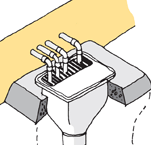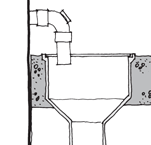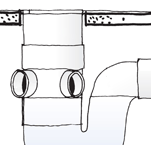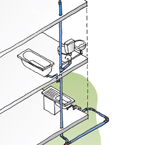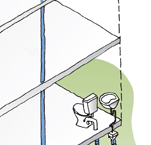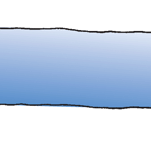Water
Water use, sustainability, and efficiency by choosing quality systems and materials, and providing environmentally friendly solutions.
Drainage systems
Compliance requirements for drainage features such as gully traps and underground drains.
On this page:
- Code requirements
- gully traps
- ventilation of drains
- pipe sizing and gradient
- material for drains
- testing of drains
Also see access for maintenance.
Code requirements
Acceptable Solution G13/AS2 Drainage covers below-ground foul drains up to 150 mm in diameter. G13/AS2 does not cover industrial, chemical or toxic wastes that cannot legally be discharged into a sewer.
Gully traps
Gully traps receive discharge from wastewater fixtures. One gully trap may receive discharge pipes from several outlets.
Each residential building must have at least one gully trap. If a drainage system becomes blocked, the gully trap provides the point where sewage can overflow outside the building, instead of building up inside the pipe and overflowing inside the building.
Gully traps must:
- have an overflow rim at least 150 mm below the overflow level of the lowest fixture served by the system
- be located within the legal boundary of the land on which the building stands
- prevent surface water from entering the trap
- be constructed so the grate will lift to allow surcharge
- have at least one discharge pipe feeding into it to maintain the water seal.
A floor waste gully acts as a floor drain as well as receiving the discharge from wastewater fixtures. It may only receive discharge pipes from wastewater fixtures that are located in the same room. It may also be used as a shower outlet but cannot receive solid waste, for example, from a WC pan.
The advantage of using a floor waste gully is that it reduces the number of connections required to the drain and the length of pipe.
They may be used in buildings where overflowing water could enter another property.
Ventilation of drains
Drainage systems must be ventilated to reduce the build-up of foul air within the drains.
A discharge stack that is within 10 m of the head of the drain may be used as the drain vent pipe.
Ventilation requirements include:
- every drain must be ventilated by an 80 mm diameter minimum vent pipe which terminates to open air
- every branch drain over 10 m in length must be ventilated
- vent pipes must be located so that there is less than 10 m of upstream drain
- vent pipes must be located downstream of the discharge pipe that is closest to the head of the drain – to allow for regular flushing at the point where the vent connects with the drain.
Pipe sizing and gradient
Pipe gradients are expressed as a ratio of the pipe length and the amount of fall over the length. The amount of fall is usually expressed as 1, for example, if a pipe gradient is 1:100, it has a fall of 1.0 m over 100 m of length.
The minimum diameter for a drain is 100 mm, except where it carries discharge from wastewater fixtures only, in which case, it may have a minimum diameter of 80 mm.
Calculating larger diameters, the size and gradient of a drain is based on the total of all discharge units that each section of the pipe carries. Each fixture type is given a rating derived from its expected discharge:
- 1:20 for 32 mm pipes
- 1:40 for pipes 65 mm diameter and under
- 1:60 for pipes 100 mm diameter and under
Drains must be laid:
- at even grades
- so the diameter does not decrease in the direction of flow
- with a minimum diameter and gradient as set out in G13/AS2:Table 2 Drain discharge loading and minimum gradients.
Materials for drains
Materials and standards for drainage pipes are given in G13/AS2:Table 1.
Drainage pipes must have flexible joints so that pipes are not damaged by differential settlement.
Testing of drains
Drains must not be covered over until they have been i/eaks.
Depending on the type of drain and the situation, tests that may be applied to a drain to test the joint performance include:
- water test
- smoke test
- coloured water test
- low-pressure air test.
Updated: 09 May 2017


